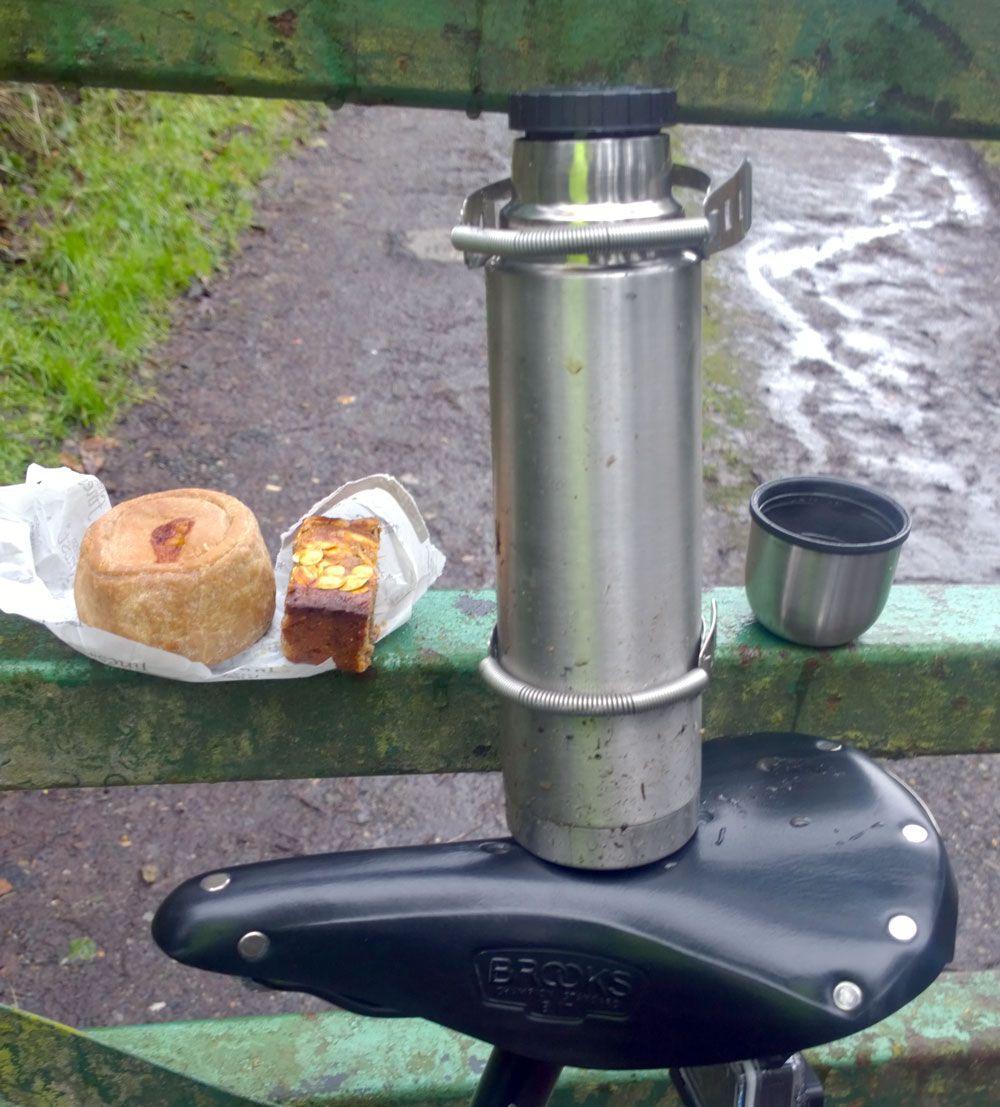All thermos flasks insulation is not metal (or glass) it's the layer of air+nothing, hence vacuum flask. Heat is lost through radiation, conduction, convection and evaporation. Your worry about the bike frame is that heat will be lost through conduction. But the metal that touches the hot liquid does not touch the outside. Here's a nice diagram.
If a flask gets warm on the outside, the metal contact will help it lose heat more quickly. But a flask that gets warm on the outside, has pretty well failed as a flask, and will lose heat quickly by radiation.
@Distorted Vision , I'll put my flask outside in the mild November weather for a couple of hours if you like, and let you know how hot it stays. I know when I use it at a coffee shop, and they say "we put extra hot milk in there" it's still too hot to drink an hour later.



 .
.
